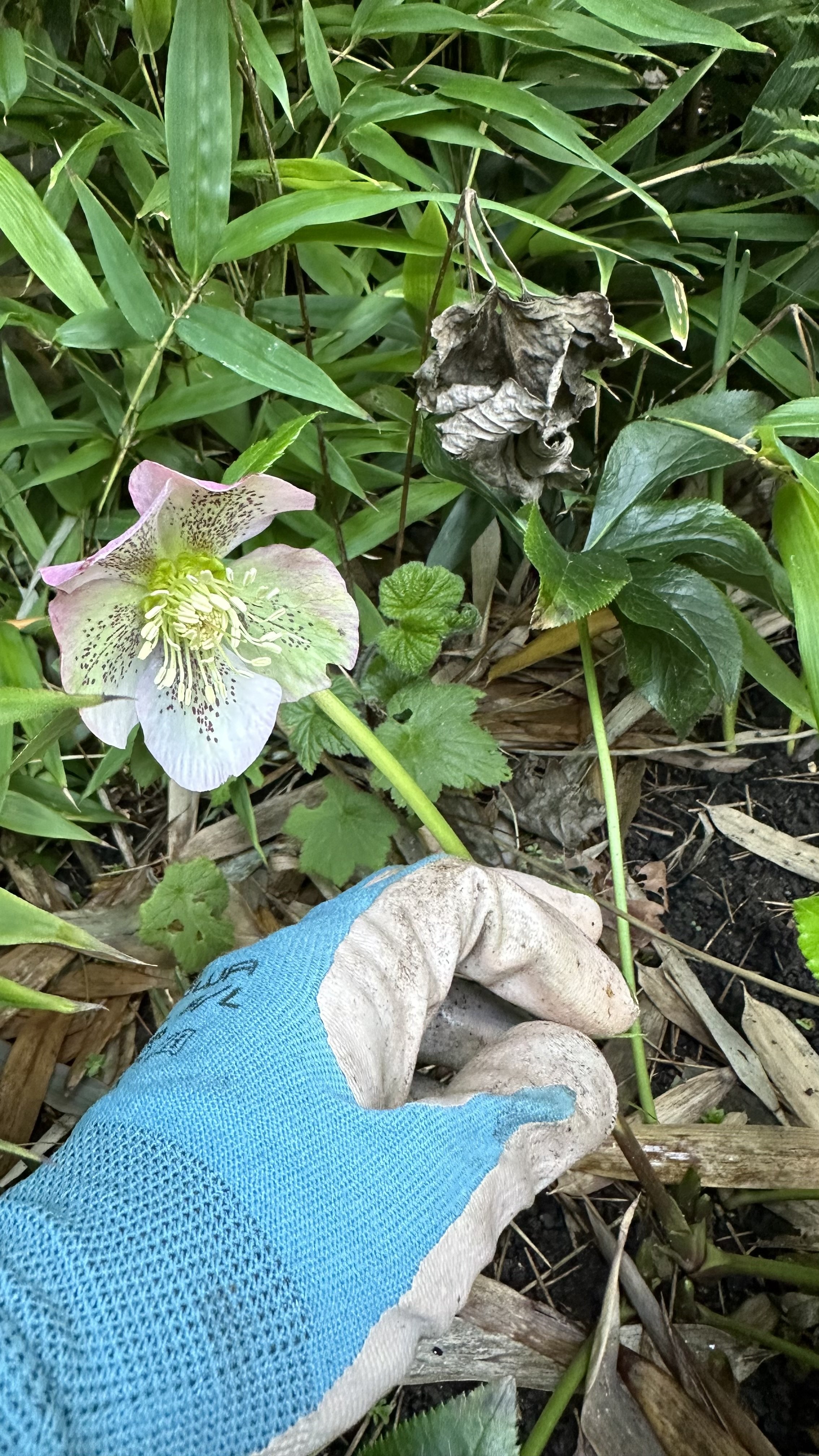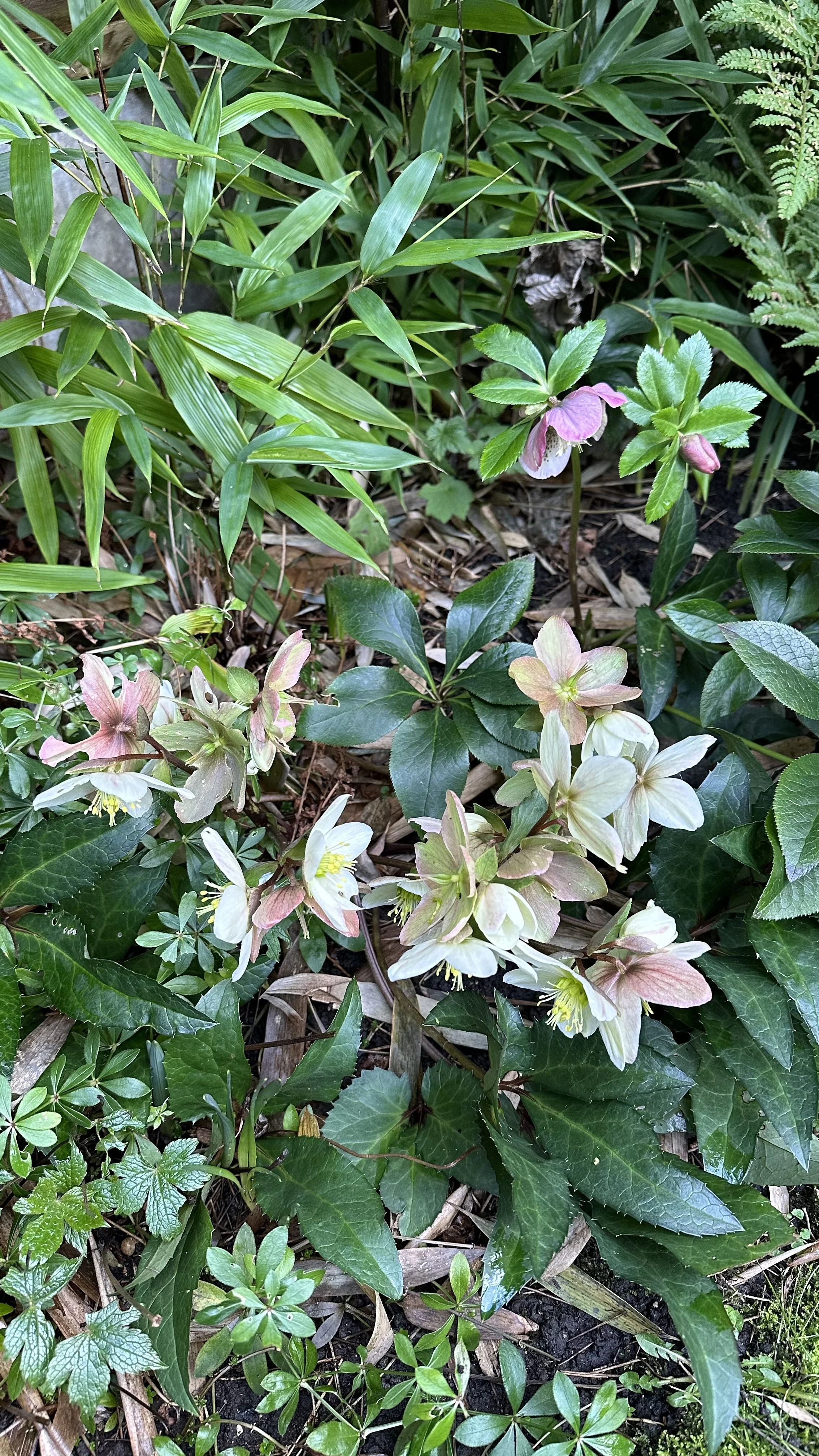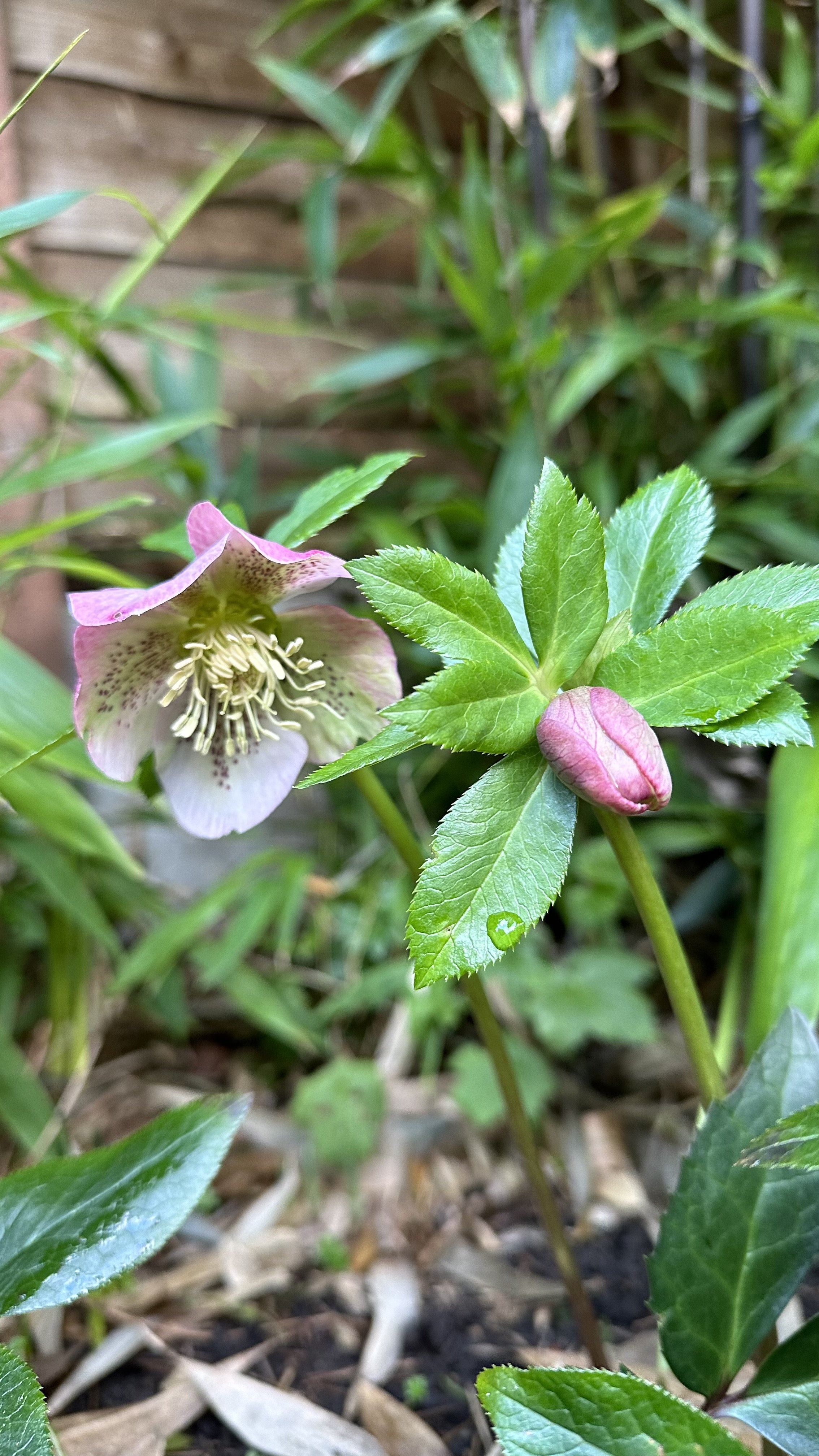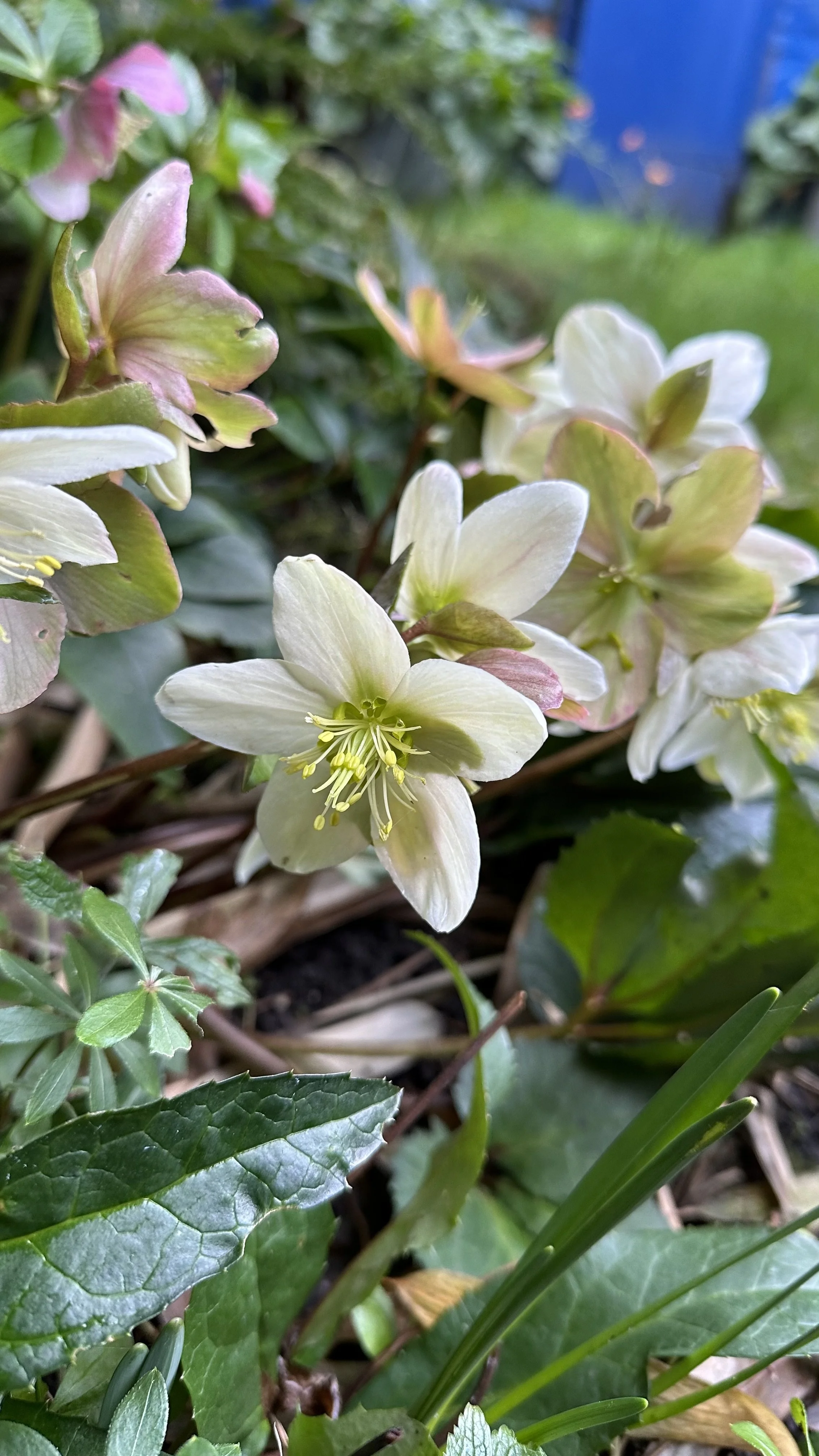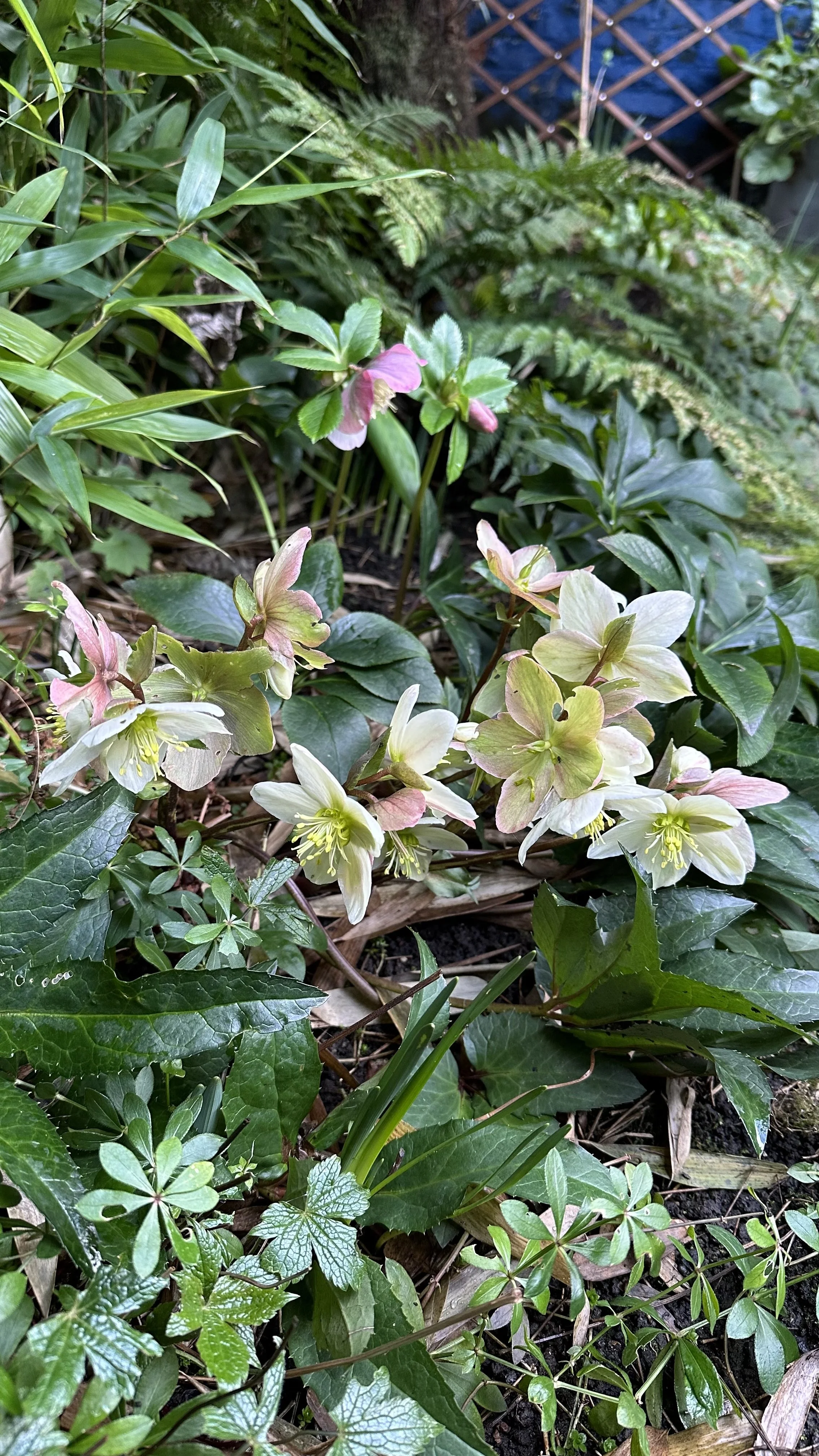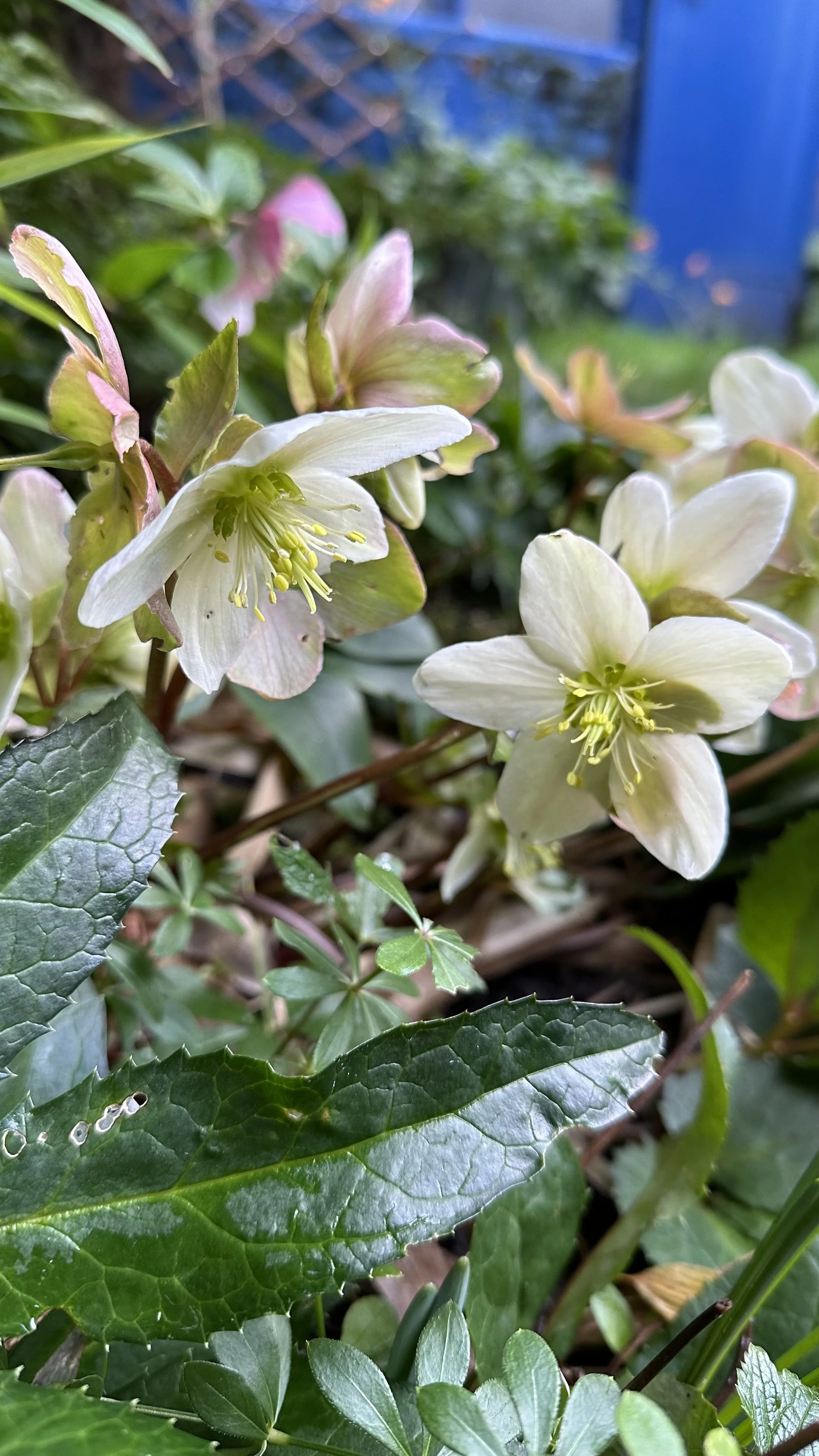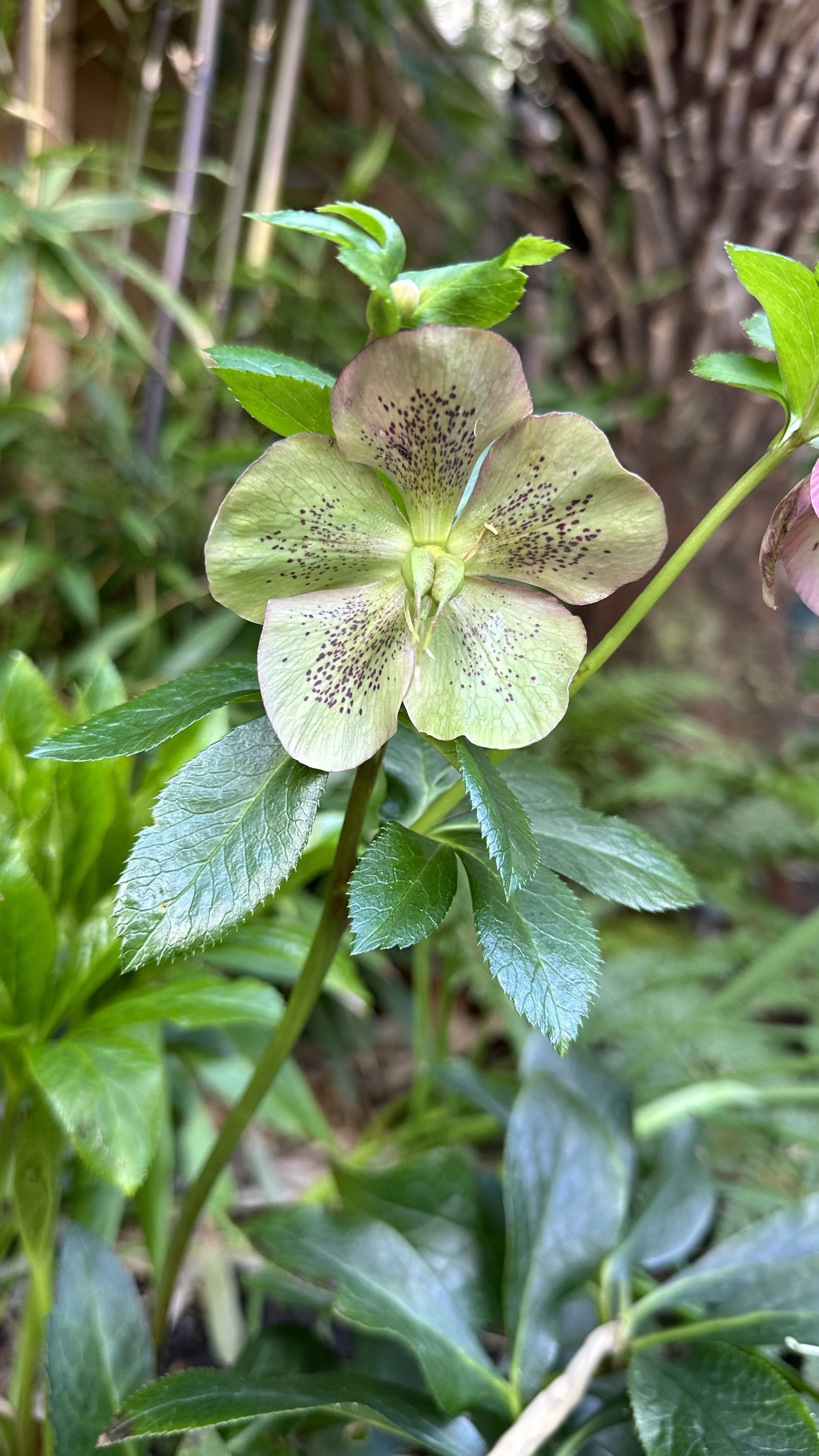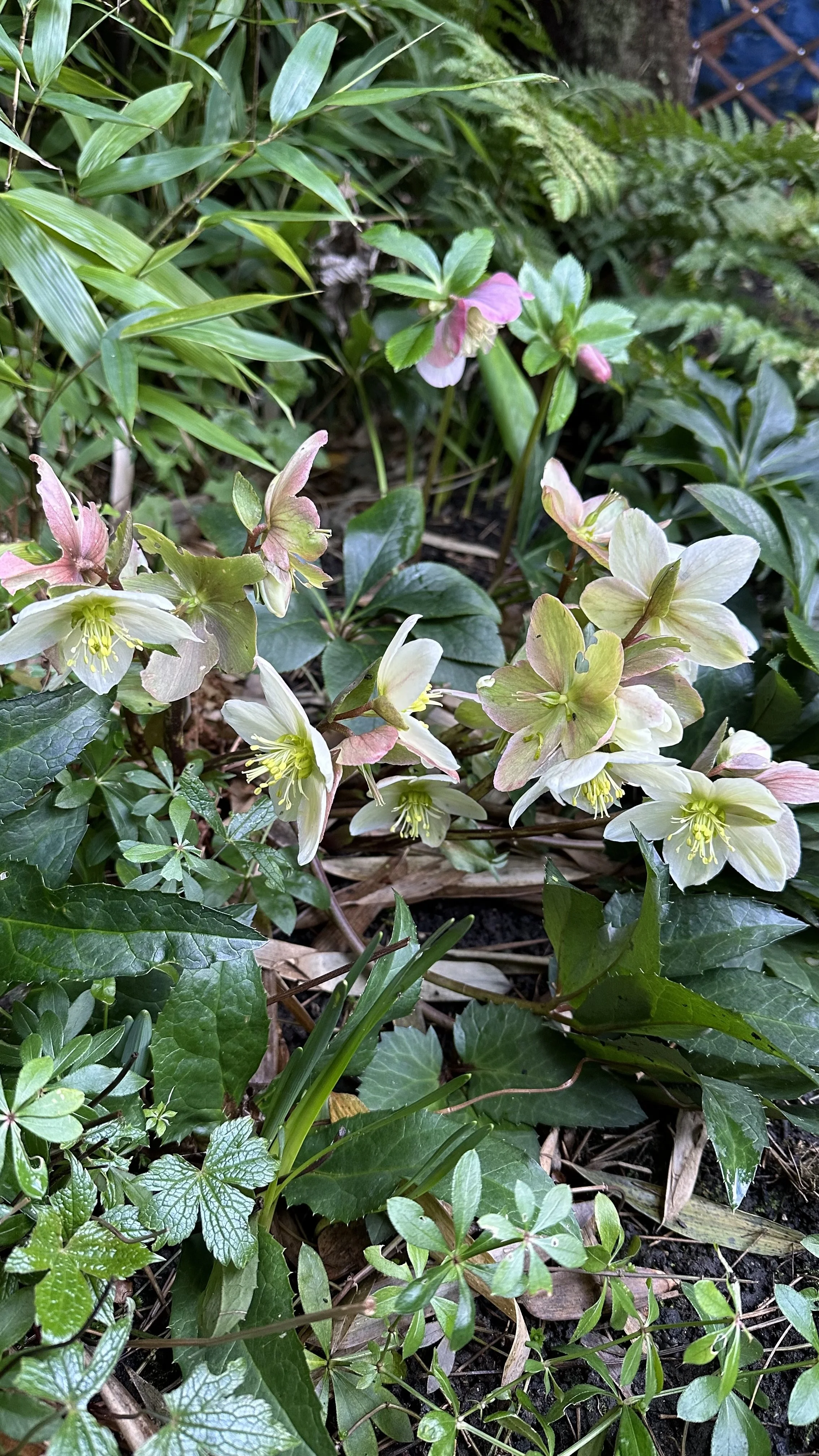What To Do With Hellebores in Summer
This article has links to products that I may make commission from.
Summer's rolling in and it's time we talk about the plant world's early bird: the hellebore.
Whether it's the Lenten rose (Helleborus orientalis) or Christmas rose (Helleborus niger), these hardy plants are famous for shaking off winter's chill ahead of the crowd and brightening our gardens with their blooms.
But what happens after their show-stopping display?
They tend to fade into the background, right? Well, that’s where we’re going wrong.
These resilient plants still need our attention during the summer months.
And guess what? Caring for hellebores post-bloom can be just as rewarding as enjoying their vibrant flowers.
Here we'll unlock the secrets to caring for hellebores during the summer months.
Whether you're tending to Lenten rose (Helleborus orientalis) or Christmas rose (Helleborus niger), this guide will ensure your hellebore plants remain healthy and vibrant.
We'll cover everything from pruning to ideal growing conditions, how they spread, and more.
Whether you're a gardening pro or just starting to flex your green fingers, this guide is here to help you master hellebore summer care.
To learn more about growing hellebores, check out my guide:
Summer Dormancy: Hellebores' Growth Cycle
Hellebores, unlike many plants that spring to life during the warmer months, play by a different rulebook.
These plants bloom during the winter or early spring, taking advantage of the cooler temperatures and available moisture.
After putting on their show in the late winter or early spring with an array of color, their pace slows as they enter a phase called summer dormancy.
While the term "dormancy" might suggest a complete halt in activity, it's not exactly the case with hellebores.
During summer dormancy, hellebores aren't growing as actively as they do in the spring, but that doesn't mean they've gone to sleep for the summer.
The plant is still alive and functioning; it has merely slowed down its growth.
This period of slow growth allows the plant to conserve resources during the hot summer months when conditions might not be as ideal for growth.
During this phase, hellebores focus on preparing for the next growing season.
It's a time of rest and recharge for them. The foliage remains green, and the plants often produce seed pods.
Once matured, these pods open and drop seeds around the base of the plant, which could potentially sprout into new plants the following spring.
This summer dormancy is a vital part of the hellebore’s growth cycle, ensuring that the plant is ready to bloom again when winter returns.
It's important to understand this aspect of their growth and care for them accordingly, which primarily involves appropriate watering and maintenance such as pruning.
Moreover, understanding the concept of summer dormancy can also help in debunking myths like "hellebores die back in summer."
They do not die back but instead conserve their energy, resting and preparing for the next bloom season.
This period of slower growth or dormancy is a natural part of their lifecycle, allowing them to thrive and survive in different seasons and weather conditions.
My favorite Hellebore ‘Ivory Prince’:
Pruning Hellebores: The Summer Must-Do
One of the essential tasks in hellebore care during the summer months is pruning.
Hellebores aren't high-maintenance plants, but they greatly benefit from this practice.
Hellebores, after their blooming period, continue to maintain their foliage.
However, as new growth begins, the older leaves might start to look worn out or even develop black or brown spots, which are often signs of fungal diseases like leaf spot or black rot.
By pruning these affected leaves, you remove the risk of the disease spreading to the new growth.
Pruning hellebores also helps to improve the overall appearance of the plant.
Removing the old, spent leaves gives more visibility to the new growth and can help to showcase the plant's beautiful green flowers or seed pods if they are present.
This clean-up task keeps your plant looking fresh throughout the summer months.
In addition, pruning improves the health of the plant.
It allows better air circulation, which reduces the risk of fungal diseases that thrive in damp, stagnant conditions.
Furthermore, by removing old leaves, more light can reach the new growth, helping it flourish and grow stronger.
So, how do you go about pruning hellebores? It's simple.
Use a sharp, clean pair of gardening shears or scissors and cut back the old leaves to the base of the plant, being careful not to damage the crown where new growth is emerging.
Dispose of the pruned leaves properly, especially if they are diseased, to prevent any potential spread of disease.
Here are my favorite gardening shears for the job:
Pruning hellebores is an important summer task.
Not only does it improve the aesthetics of your garden, but it also ensures the health of your hellebores, setting them up for success in their next blooming season.
For more tips and inspiration for your shade garden, check out my guides:
The Best Low Maintenance Shade Plants
The Best Time to Prune Hellebores
Pruning your hellebores is an important part of their care, and knowing when to prune is key.
Timing your pruning right can impact the health, growth, and overall appearance of your hellebores.
Hellebores typically bloom from late winter to early spring, showcasing their beautiful flowers when most other plants are dormant.
After blooming, they begin to produce new growth.
This is when you should start considering pruning your hellebores.
The best time to prune hellebores is typically in late spring or early summer, just as the new growth begins to emerge.
Pruning at this time serves several purposes.
First, it helps redirect the plant's energy towards the new growth, promoting a healthier and more vigorous plant.
Second, it helps to clear away any old, possibly diseased, or damaged foliage, thereby preventing the spread of diseases and giving the plant a fresh start.
However, keep in mind that while late spring to early summer is the best time for regular pruning, if you notice diseased or dying leaves at any time of the year, it's best to remove them immediately.
This prompt action can prevent any potential spread of disease to the rest of the plant.
Another important thing to note is that while pruning, ensure you're using clean and sharp gardening shears to prevent the spread of disease and make a clean cut that the plant can heal from more easily.
To sum up, knowing when to prune your hellebores is crucial for their overall care.
By understanding their growth cycle and acting accordingly, you can maintain healthy, vibrant hellebores that grace your garden with their beauty year after year.
For more shade garden ideas, check out my guides:
Do Hellebores Die Back in Summer?
There's a common misconception that hellebores die back during the summer months.
This belief likely stems from the noticeable slowing of the plant's growth and the possible wilting or discoloration of older leaves.
However, hellebores, in reality, do not die back in the summer.
While it's true that hellebores go into a phase of dormancy during the summer, this doesn't equate to them dying back.
During dormancy, the plant's growth slows down considerably as it conserves energy to withstand the hot summer conditions.
While some of the older leaves might begin to look a bit tired or even turn brown, this isn't a sign of the plant dying but a natural part of its life cycle.
Even during dormancy, hellebores remain green and continue to have a presence in your garden, albeit a less vibrant one than during their peak blooming season.
The plants may even develop seed pods during this period, an activity that certainly wouldn't occur if the plant were dying.
It's important not to confuse this period of slowed growth or dormancy with the plant dying back.
Instead, consider this period as the plant's time to rest and recharge.
With proper care – like appropriate watering, mulching to keep the roots cool, and pruning to remove any spent or diseased leaves – hellebores will survive the summer and return to their growth cycle when the cooler seasons arrive.
In summary, while hellebores might look a bit less lively during the summer months, rest assured they are not dying. Instead, they're simply taking a well-deserved break after their beautiful winter bloom and preparing for the next season of growth.
For more tips, check out my guide:
Ideal Growing Conditions for Hellebores
Hellebores are hardy and adaptable, but they have specific preferences when it comes to their growing conditions.
Paying attention to these preferences can help your hellebores thrive and produce their best possible display year after year.
1. Light:
Hellebores prefer a sheltered location that offers partial shade.
While they can tolerate full sun in cooler climates, they don't fare well under intense, direct sunlight, particularly during the heat of summer.
Dappled sunlight or a few hours of morning sun is generally ideal for these plants.
Hellebores are perfect for a north west facing garden.
2. Soil:
Hellebores prefer well-drained, fertile soil.
They thrive in loamy soil that is rich in organic matter.
Hellebores are also tolerant of a range of soil pH, but they prefer a slightly alkaline soil.
If your soil is overly acidic, you might want to add some lime to adjust the pH.
3. Water:
Although hellebores are quite drought-tolerant once established, they prefer consistently moist soil, especially during their growing and blooming season.
However, avoid waterlogged conditions, as this can lead to root rot.
4. Temperature:
Hellebores are hardy plants that can withstand cold winter temperatures.
However, they appreciate some protection from harsh winter winds which can damage their foliage.
In contrast, during hot summers, they appreciate shade and sufficient moisture to help them through their dormancy period.
5. Mulch:
A layer of organic mulch around your hellebores can help retain soil moisture, suppress weeds, and keep the roots cool during hot summers.
It also gradually breaks down, adding nutrients to the soil.
Here is my favorite mulch for hellebores:
Understanding and providing these ideal conditions for your hellebores will not only help them grow robustly but will also encourage a splendid display of their beautiful winter to early spring flowers.
The Spread and Growth of Hellebores
Proper care for hellebores results in gradual spread, enhancing the aesthetic appeal of your garden each year.
So, if you're wondering, Do hellebores spread? Yes, they do, and they do so elegantly!
Hellebores are perennial plants known for their early blooming and adaptability to various conditions.
Understanding their spread and growth patterns can be crucial for gardening success with these unique and beautiful plants.
Spread
The spread of hellebores can vary depending on the specific type, but most varieties tend to form clumps that slowly expand over time.
Hellebores are not considered invasive and won't take over your garden, but they can gradually spread through self-seeding.
After flowering, hellebores produce seed pods that open to drop seeds around the base of the plant.
If conditions are right, these seeds can sprout and grow into new plants.
Growth
The growth of hellebores is quite robust, considering they are one of the few plants that thrive in winter.
They usually begin their growth cycle in late winter or early spring, when new leaves emerge from the base of the plant.
At the same time, flower stems rise above the foliage, each one bearing a single blossom.
The growth continues through spring until summer arrives, during which hellebores enter a phase of dormancy, slowing down their growth rate considerably.
Height and Width
Hellebores typically grow to a height of 12 to 18 inches, with a similar spread.
However, this can vary among different types and cultivars.
For instance, the 'Bear's Foot' hellebore (Helleborus foetidus) can reach heights of up to 24 inches, while the 'Ivory Prince' lenten rose (Helleborus x hybridus 'Walhelivor') generally stays within the 12 to 15-inch range.
Longevity
As perennials, hellebores can live for several years, growing and blooming each year.
With the right conditions and proper care, they can be a long-lasting addition to your garden.
Knowing how hellebores spread and grow can help you plan your garden and provide them with the space and care they need to thrive.
It also helps you understand what to expect from these plants and how to manage their growth effectively.
Whether you are considering adding hellebores to your garden or already have them and want to learn more, understanding their growth and spread patterns is a critical part of successful hellebore gardening.
For more ideas, check out my guides:
Where to Buy and When to Plant Hellebores
If you're considering adding more hellebores to your garden or starting a new hellebore garden, it's essential to know where to buy hellebores and when to plant them.
You can find a variety of hellebores, including the mesmerizing purple hellebore, at local nurseries or online plant shops.
Planting hellebores at the right time can greatly influence their growth and flowering success.
While these plants are hardy and adaptable, certain planting times are preferable to ensure they have the best start.
The ideal time to plant hellebores is in late winter to early spring.
This is when the plants are naturally beginning their growth cycle, making it a perfect time to establish them in a new location.
Planting during this period aligns with the natural rhythm of the plants, allowing them to acclimate to their new location and start growing when the conditions are optimal.
If you purchase hellebores as potted plants, they can technically be planted at any time of the year, provided you can ensure they'll receive the necessary care for establishment.
However, avoid planting during the peak of summer heat, as this could cause undue stress to the plants.
When planting hellebores, it's also important to consider their specific growing needs.
These plants prefer well-drained soil rich in organic matter, and a location with dappled shade or morning sun is best.
It can also be helpful to add a layer of mulch after planting to help conserve moisture and suppress weeds.
Check out my guide: The Best Alternatives to Traditional Mulch for Your Garden.
Remember, hellebores are a long-term investment in the garden. They can take a year or two to fully establish and start flowering prolifically.
So, be patient and give them the time they need to settle in.
For more inspiration, check out my guides:
How to Grow Hellebores FAQ
How Tall Do Hellebores Grow?
The height of hellebores can vary greatly depending on the specific variety.
However, most commonly grown types, such as the Lenten rose (Helleborus orientalis) and Christmas rose (Helleborus niger), typically grow to a height of 12 to 18 inches, with some varieties reaching up to 24 inches.
The 'Bear's Foot' hellebore (Helleborus foetidus) is known to be one of the taller varieties, with heights reaching up to 24 inches or even more in ideal conditions.
On the other end of the spectrum, the 'Ivory Prince' lenten rose (Helleborus x hybridus 'Walhelivor') usually stays within a more modest range of 12 to 15 inches.
These are general ranges, and specific growing conditions, such as light, soil quality, and care, can influence a hellebore's final height.
In all cases, hellebores have a tendency to form a clump of foliage close to the ground, with flowering stalks rising above the leaves.
Can I Cut Back Hellebores in May?
Yes, you can cut back hellebores in May, but whether you should or not depends on the specific circumstances of your plants.
In general, May is the time when many gardeners begin to see new growth appearing at the base of their hellebore plants.
This new growth is a signal that it could be a good time to remove the old leaves if they're looking tattered or showing signs of disease, such as leaf spot.
By removing these old leaves, you can help prevent the spread of diseases and give the new growth room to thrive.
However, if your hellebore's old leaves are still looking healthy and vibrant, you might want to leave them alone.
The leaves provide energy for the plant and can also help to shade the soil, conserving moisture during the warmer months.
Also, if your hellebore is a variety that blooms in late spring (like some Helleborus x hybridus varieties), cutting back in May could remove flower buds, reducing the plant's display.
In general, observe your hellebores and let their condition guide you.
If the old leaves are looking worn out or sick, go ahead and cut them back.
But if they're still adding to the beauty of the plant, there's no need to rush to prune.
In all cases, remember to use clean, sharp pruning shears to make clean cuts and prevent the spread of disease.
What Zone is Best for Hellebores?
Hellebores are hardy, resilient plants that can be grown in a wide range of USDA hardiness zones.
Most varieties of hellebores, including the popular Lenten rose (Helleborus orientalis) and Christmas rose (Helleborus niger), are suitable for zones 4 through 9.
This wide range of adaptability means hellebores can be grown in many different climates, from relatively cold areas to regions with mild winters.
However, in zones with extremely cold winters or hot summers, hellebores might require additional care.
In colder zones, a layer of mulch can help protect the plants from harsh winter conditions.
In warmer zones, the plants may benefit from some afternoon shade to protect them from intense summer heat.
Hellebores are adaptable and can tolerate a range of light conditions, soil types, and moisture levels, making them a good fit for many gardens.
However, for the best results, these plants prefer a partially shaded location with well-drained soil rich in organic matter.
Always check the specific growing requirements of the hellebore variety you are interested in, as there may be some variations among different species and cultivars.
But generally speaking, if you live in USDA hardiness zones 4 through 9, hellebores can be an excellent addition to your garden.
Wrap-Up
In conclusion, the summer care for hellebores encompasses pruning old leaves and seed pods, ensuring ideal growing conditions, and closely monitoring their health.
Despite the passing of the flowering season, your role as a gardener continues.
So, arm yourself with your trusty gardening tools and embrace the summer season, tending to your hellebores.
Next winter, when those beautiful hellebore flowers return to brighten your garden, you'll appreciate the time and effort you invested.
